In a world where digital currencies and decentralized systems reign supreme, creating a blockchain might sound like a task reserved for tech wizards and computer sorcerers. But fear not! Building your own blockchain isn’t just for the chosen few; it’s more like assembling IKEA furniture—confusing at first but totally doable with the right guidance (and maybe a few snacks).
Table of Contents
ToggleUnderstanding Blockchain Technology
Understanding blockchain technology enables individuals to grasp its significance in various industries. This innovation provides a decentralized and secure method for recording transactions and data.
What Is Blockchain?
Blockchain is a digital ledger that records transactions across multiple computers. The decentralized nature of this technology ensures that no single entity has control over the entire chain. Information added to the blockchain becomes immutable, meaning it cannot be altered or deleted. Each block contains a list of transactions and a hash of the previous block, creating a chain of blocks securely linked together. By design, blockchain promotes transparency and trust among users.
How Blockchain Works
Blockchain operates through a consensus mechanism that validates transactions before they are added to the chain. Each transaction is grouped into a block and verified by network participants known as nodes. Once confirmed, the block is added to the existing chain, safeguarding it against tampering. Users can view transaction history while their identities remain pseudonymous. Cryptography ensures the security of data transmitted over the network, while smart contracts automate processes and enforce agreements without intermediaries. This combination of features highlights blockchain’s potential to transform various sectors by enhancing efficiency and reducing fraud.
Steps for Creating a Blockchain

Creating a blockchain involves several strategic steps that ensure functionality and security. Each step is crucial for developing a robust system that effectively meets user needs.
Defining Your Purpose
Determining the purpose of the blockchain is the first crucial step. This decision influences various aspects of the project, including the target audience and the specific problems to address. For instance, a supply chain blockchain might focus on transparency and traceability, while a financial blockchain may prioritize speed and security. Clarity on these goals ultimately shapes the technology and processes to implement.
Choosing a Consensus Mechanism
Selecting an appropriate consensus mechanism is essential after defining the purpose. Different mechanisms, such as Proof of Work or Proof of Stake, offer varying levels of efficiency, security, and decentralization. For example, Proof of Work requires significant computational power, making it secure but energy-intensive. Conversely, Proof of Stake mandates participants hold a certain amount of the cryptocurrency, enhancing efficiency while maintaining security. The choice depends significantly on the intended use case and the desired network characteristics.
Designing the Architecture
Designing the blockchain architecture follows the consensus mechanism choice. It encompasses decisions about data structure, network layer, and user interface. Developers must outline how data will be stored and accessed, ensuring a user-friendly experience. Choosing whether to create a public or private blockchain also plays a role in design. A public blockchain supports broader participation, while a private blockchain restricts access for increased security. Each architectural decision affects the blockchain’s functionality and user experience.
Development Tools and Platforms
Developing a blockchain involves selecting the right tools and platforms for the task. These resources help streamline the process and enhance functionality.
Programming Languages for Blockchain
JavaScript serves as a primary choice for many developers. Its versatility supports both front-end and back-end development. Solidity, primarily used on Ethereum, allows for robust smart contract creation. Python, known for its simplicity, offers libraries like Web3.py, facilitating interaction with Ethereum blockchains. Go provides blockchain frameworks such as Hyperledger Fabric, promoting secure and scalable applications. Java remains relevant, utilized in projects like NEO for cross-platform blockchain development. Lastly, C++ provides performance benefits, being integral to Bitcoin’s core.
Popular Blockchain Platforms
Ethereum stands out as a leading platform for creating decentralized applications (dApps). Offering a robust ecosystem, it supports smart contracts through Solidity. Hyperledger Fabric focuses on enterprise solutions, allowing businesses to create private blockchains tailored to their needs. Binance Smart Chain caters to DeFi applications, providing an efficient environment with lower transaction fees. Cardano differentiates itself through a research-driven approach, emphasizing security and sustainability. Solana’s high throughput draws developers seeking speed and efficiency for dApps. Finally, Polkadot fosters interoperability between different blockchains, enabling a multi-chain ecosystem.
Testing and Deployment
Testing and deployment are crucial steps in the blockchain creation process. Each phase ensures functionality and security before public use.
Importance of Testing
Testing serves as a safeguard against vulnerabilities and ensures reliable performance. It involves various methods, including unit testing, integration testing, and stress testing. Unit testing verifies individual components, while integration testing assesses how components interact. Stress testing pushes the network to its limits, simulating high transaction volumes to identify potential issues. Effective testing helps detect bugs early, which reduces costly fixes later. Additionally, thorough testing enhances user trust in the system’s reliability and security. Ultimately, it assures stakeholders that the blockchain operates as intended.
Deploying Your Blockchain
Deploying a blockchain involves several essential steps after successful testing. First, developers must choose an appropriate hosting environment, such as cloud services or on-premises servers. Selecting the right infrastructure impacts scalability and performance. Once the blockchain is hosted, developers can initiate the deployment process. Smart contracts may require deployment on the selected network, ensuring that all functionalities are accessible. Developers should monitor the network for any anomalies after deployment. Regular monitoring and maintenance enhance the system’s sustainability and security over time. A well-planned deployment strategy sets the foundation for a thriving blockchain ecosystem.
Real-World Applications
Blockchain technology finds relevance across multiple sectors, demonstrating its versatility and impact.
Industries Leveraging Blockchain
Finance embraces blockchain for its ability to streamline transactions, enhance security, and reduce fraud. Healthcare utilizes blockchain for secure patient data sharing and increased interoperability among systems. Supply chain management benefits from improved traceability, enabling companies to track products from origin to consumer. Additionally, real estate experiences efficiency in property transactions through secure and transparent record-keeping. Entertainment companies leverage blockchain to manage digital rights and ensure fair compensation for creators.
Case Studies of Successful Implementations
One notable example involves Bitcoin, the first cryptocurrency, showcasing blockchain’s potential for decentralized transactions. Retailers like Walmart adopt blockchain for tracking food products, ensuring safety and quality. The use of Ethereum leads to innovative smart contracts in sectors like insurance, automating claims processing and reducing operational costs. Another case features IBM’s Food Trust network, enhancing transparency in food supply chains for companies like Nestlé and Unilever. Each implementation highlights blockchain’s capability to solve industry-specific challenges, driving efficiency and trust among participants.
Creating a blockchain is a journey that anyone can embark on with the right tools and knowledge. By understanding the foundational concepts and steps involved, individuals can develop a robust and secure blockchain tailored to their specific needs. The potential applications across various industries highlight its transformative power. As technology continues to evolve, embracing blockchain can lead to innovative solutions that enhance efficiency and foster trust. With careful planning and execution, the possibilities are endless for those ready to dive into the world of blockchain development.








